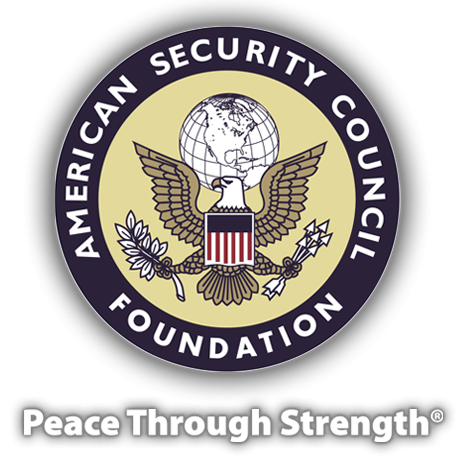Navy Issues Iran Warning to Keep Away From Warships
The U.S. Navy’s stay-away warning to marine traffic in the Persian Gulf, the Arabian Sea and the Gulf of Oman was intended for Iran, Pentagon officials confirmed on Thursday.
The maritime message, posted this week by the Navy via the Maritime Safety Office run by the National Geospatial-Intelligence Agency, alerted all international maritime traffic to maintain a safe distance of at least 100 meters from U.S. naval vessels in international waters and straits.
“We have stated very clearly to individuals in the area to be careful and avoid our ships in the area,” Jonathan Hoffman, the Pentagon’s chief spokesman, said during a Thursday media briefing. “We’ve seen Iran violate that in an alarming and unprofessional way recently.”
A month ago, nearly a dozen Iranian Islamic Revolutionary Guard Corps Navy vessels harassed a formation of U.S. Navy and Coast Guard ships operating in international waters in the northern Persian Gulf. During the incident, the Iranian vessels came within yards of the U.S. ships, the Navy reported.
Last June, U.S. Central Command released video footage of an Iranian Revolutionary Guard Corps Navy fast attack craft coming alongside the Japanese-owned petrochemical tanker M/V Kokuka Courageous and removing what CENTCOM said was a limpet mine.
Speaking Thursday, Hoffman said there was no immediate threat that caused the Navy to issue the warning.
“A determination was made that it would be helpful to provide a reminder, additional guidance to mariners in the area, to avoid U.S. warships and to set out a bright-line rule that would be a little bit clearer for them if there was any claims of possible confusion that they should not attempt to harass or approach or confront a U.S. warship sailing in international waters,” Hoffman said.
Legally, ships have a right to defend themselves under international law, maritime expert Sal Mercogliano told USNI News. Mercogliano is an associate professor of history at Campbell University in North Carolina and holds a merchant marine deck officer license.
The Navy’s warning action, declaring an exclusion zone around set areas at sea, does happen, Mercogliano said. The British did something similar during the Falklands Islands War in 1982.
A buffer “can be done around ships, but a 100-meters area is extremely small,” Mercogliano said.
In the ocean, most ships try to maintain a closest point of approach of several miles, Mercogliano said. When ships are operating in more congested shipping lanes or smaller bodies of water such as the Strait of Hormuz, ships have to operate closer to each other.
The U.S. Coast Guard’s Rules of the Road discusses maintaining safe distances but does not specify what is a safe distance because conditions vary.
“In the open ocean, three miles is a standard, but in the straits, as long as ships are in the lanes of the traffic separation scheme, you can get passing distances of a 1,000 yards,” Mercogliano said. “In the case of small vessels, the onus is on them to steer clear of larger ships as they are not constrained by draft and maneuverability. We see that with small boats crossing the bows of larger ships in harbors all the time. It is unofficially referred to as the Law of Gross Tonnage.”
The following message from the U.S. Navy was posted Wednesday by Maritime Safety Office run by the National Geospatial-Intelligence Agency.
HYDROPAC 1478/20(62,63).
ARABIAN SEA.GULF OF OMAN.PERSIAN GULF.
DNC 03, DNC 10.
U.S. NAVAL FORCES ARE CONDUCTING ROUTINE OPERATIONS IN THE REGION WITH A COMMITMENT TO FREEDOM OF NAVIGATION AND THE FREE FLOW OF MARITIME COMMERCE.
DUE TO RECENT EVENTS, IN ORDER TO ENHANCE SAFETY, MINIMIZE AMBIGUITY, AND REDUCE OPPORTUNITIES FOR MISCALCULATION, ALL VESSELS ARE ADVISED TO MAINTAIN A SAFE DISTANCE OF AT LEAST 100 METERS FROM U.S. NAVAL VESSELS IN INTERNATIONAL WATERS/STRAITS.
ARMED VESSELS APPROACHING WITHIN 100 METERS OF A U.S. NAVAL VESSEL MAY BE INTERPRETED AS A THREAT AND SUBJECT TO LAWFUL DEFENSIVE MEASURES. MARINERS ARE REMINDED TO OPERATE IN ACCORDANCE WITH INTERNATIONAL LAW AND WITH DUE REGARD FOR THE SAFE NAVIGATION OF OTHER VESSELS.
ALL VESSELS OPERATING IN THE VICINITY OF U.S. NAVAL VESSELS ARE ADVISED TO CLEARLY COMMUNICATE INTENTIONS, RESPOND TO QUERIES CONCERNING COURSE AND SPEED, EXERCISE PRINCIPLES OF PRUDENT SEAMANSHIP AS REQUIRED UNDER INTERNATIONAL LAW, AND REMAIN AT THE MAXIMUM AVAILABLE DISTANCE FROM U.S. NAVAL FORCES.//
Photo: Iranian Islamic Revolutionary Guard Corps Navy (IRGCN) vessels conducted unsafe and unprofessional actions against U.S. Military ships by crossing the ships’ bows and sterns at close range while operating in international waters of the North Arabian Gulf. The guided-missile destroyer USS Paul Hamilton (DDG 60) is conducting joint interoperability operations in support of maritime security in the U.S. 5th Fleet area of operations. US Navy photo.
Link: USNI News











